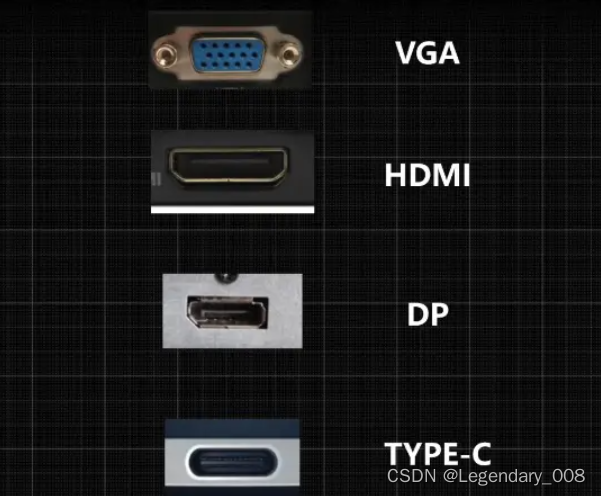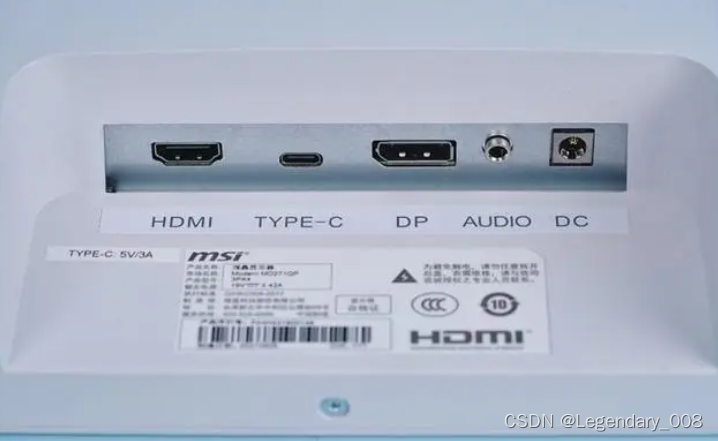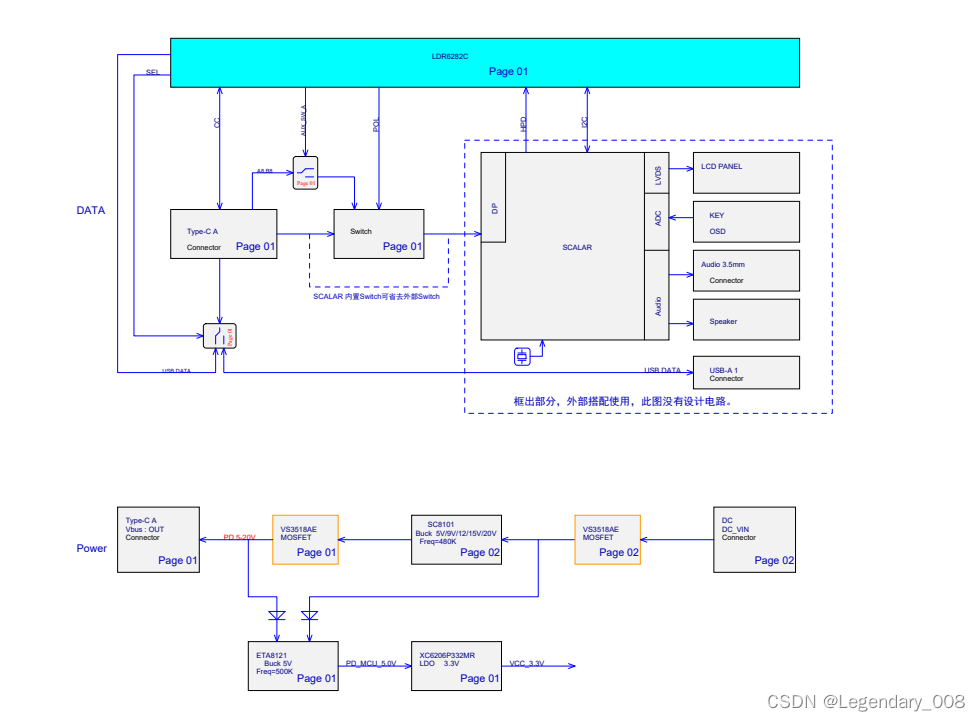The video output interface of the notebook generally has four types: VGA, HDMI, DP, and Type-C.

Since the 66th generation, VGA has basically disappeared, so HDMI and DP interfaces are still more common.
If your notebook only supports HDMI1.4, then the upper limit of your external display can only be 2K60 or 1080P144, and only HDM2.0 can support 4K60 or 2K144.
At present, a small number of notebooks already support DP1.4, with a bandwidth of more than 20 G, and there is no problem with 4K60 or even 2K240.

The Type-C port is quite special. In addition to the maximum actual video signal per second, it also undertakes the function of charging the notebook.
And if your Type-C port happens to support Thunderbolt and is at full speed 40G, then it can be connected to two external 4K60 Hz devices at the same time.

What are the benefits of the TYPE-C interface?
The USB-C interface does not need to distinguish the front and back, supports Thunderbolt 4 and DP video signal output, supports high-speed data transmission, and supports 100W fast charging, becoming the mainstream interface used on notebooks. Through the USB-C interface, it is very convenient to connect external monitors, storage devices, etc., and it can also be connected to PD fast charging, which is very convenient to use.
With the popularization of the USB-C ecosystem, more and more monitors have added USB-C video input while retaining the traditional DP and HDMI video input interfaces. The display uses the USB-C interface for video transmission and charging output, which greatly facilitates the use of laptop users. Some monitors also have a built-in hub function, which can also connect storage devices, keyboards and mice, etc. during video transmission, giving full play to the advantages of one-line communication.

Display USB-C is more suitable for devices with a single interface, such as tablet computers and Switch game consoles, to charge the device while outputting video. Use the video output for a long time without worrying about power issues.
display frame
LDR6020 is a USB PD3.1 protocol communication chip launched by Ledry Technology. It has the function of TRY.SRC, the function of switching
Data Role, and the function of allowing smart devices to enter ALT Mode through VDM negotiation. LDR6282C is used for DC power supply. In the case of a single USB-C interface, it uses 5 IO ports for voltage feedback control. Its USB C interface can output up to 5 different voltage combinations, which is especially suitable for DC-powered desktop display solutions. LDR6020 supports the latest USB PD3.1 protocol issued by the USB IF Association,
1.1. Features
◇ Support USB PD2.0, USB PD3.0 protocol ◇ Support
Data Swap switch to UFP role
◇ Support DP Alt mode configuration ◇ Support user upgrade
on APP side
1.2. Application
◇ Desktop Type-C display
◇ Type-C projector

Summarize:
The USB-C interface is widely used in mobile phones and notebooks. Its compact interface and rich functions have become a powerful substitute for traditional video interfaces. At the same time, the USB-C interface also supports power transmission, which can charge connected notebooks and mobile phones. For companies, using USB-C interface monitors to replace traditional monitors makes it more convenient to carry notebooks during commuting.
Moreover, many monitors that support USB-C interface power supply and video input have a built-in USB HUB function in the monitor, which can connect the keyboard and mouse to the monitor. office.
At present, many manufacturers are optimistic about the USB-C ecology and have launched USB-C display products with mainstream specifications, which meet the needs of modern office and facilitate people to work. And with the improvement of the performance of notebooks, using notebooks instead of desktops for office work saves space and is easy to carry.